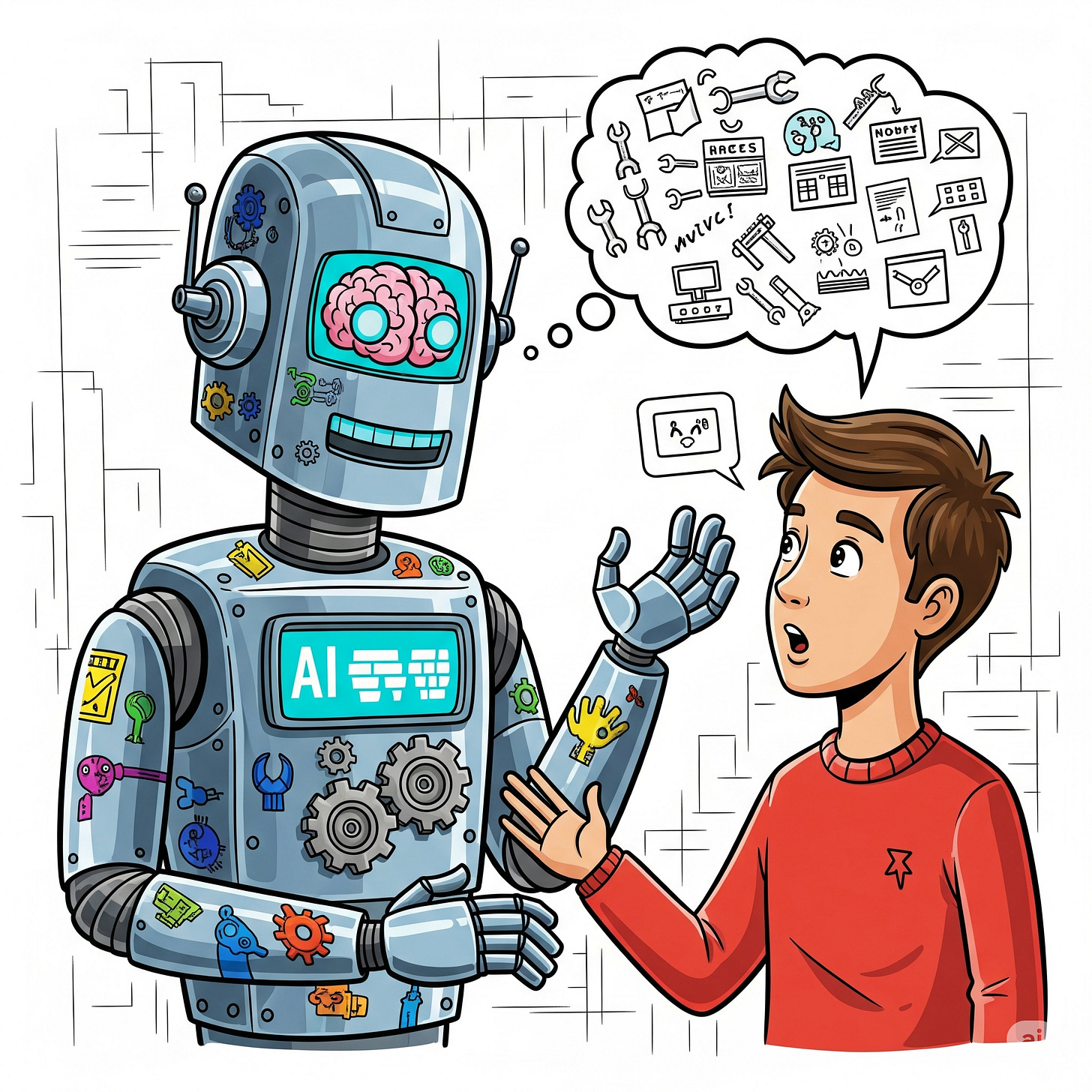Summary: Your Quick Guide to AI Agents
Ever wished for a smart assistant that actually gets things done for you? That's an AI agent in a nutshell! Unlike regular software that just helps you, agents can independently tackle complex tasks, make decisions, and even correct themselves. They're built on powerful language models, use "tools" to interact with the real world, and follow your "instructions" to achieve their goals. Perfect for messy, complex problems that traditional programs can't touch.
Ready to Meet Your New Best AI Buddy? Let's Talk Agents!
You know that feeling when you wish someone—or something—could just handle it? That mountain of emails, the endless to-do list, or even just figuring out what to make for dinner when your brain feels like scrambled eggs? Well, buckle up, because that's pretty much what AI agents are here for. They're like your super-smart, ever-ready personal assistant, but on a whole other level.
So, What's an "Agent," Anyway? (And Why Should You Care?)
Here’s the thing: we've had software that helps us streamline tasks for ages. Think about your accounting software or that app that helps you manage projects. They're great, right? They make things faster, more organized. But imagine something that doesn't just help you do a task; it actually does the task for you, almost entirely on its own. That's an AI agent in a nutshell.
These aren't just glorified macros, folks. We're talking about systems that can independently accomplish tasks on your behalf. They don't just follow a script; they can make decisions, adjust their strategy when things get tricky, and even stop if they hit a wall, letting you know it’s time to step in. It’s pretty cool, if you ask me.
More Than Just a Smarty-Pants Program
Now, you might be wondering, "Why bother with an agent when I've got my trusty spreadsheet?" And that's a fair question! The answer often boils down to complexity and messiness.
Think about situations where decisions are fuzzy, not cut-and-dried. Or when you're dealing with mountains of unorganized information – like customer emails, legal documents, or social media chatter. Traditional software usually chokes on that kind of stuff, because it needs precise, predefined rules. But an agent, powered by the incredible smarts of a Large Language Model (LLM), can actually understand the context. It can sift through that chaos, make nuanced judgments, and even figure out what to do next without you having to spell out every single step.
Honestly, it’s a game-changer for anything from handling complicated insurance claims (ever tried to write rules for every possible scenario there?) to giving you a personalized shopping experience.
The Agent's Secret Sauce: Three Key Ingredients
Every good agent has a few core things going for it, sort of like a secret recipe. If you get these right, you’re well on your way to building something truly useful.
First, there's the Model. This is the brain of the operation, usually a big, powerful LLM. Think of it as the agent's main thinking engine, helping it reason through problems and figure out what to do. Different models have different strengths, just like how some people are whizzes at math and others are fantastic storytellers.
Then, we have Tools. These are pretty much what they sound like: the external functions, apps, or APIs that let the agent do things in the real world. Does your agent need to send an email? It uses an email tool. Does it need to look up information online? It uses a search tool. These are what give your agent its "hands" and "feet" to interact with the world beyond its digital brain. We're talking about everything from pulling data from a database to updating a record in a CRM system.
Finally, there are the Instructions. These are the guidelines, the rulebook, the marching orders you give your agent. They tell it what its goal is, how it should behave, and what kind of persona it should adopt. Clear, well-structured instructions are vital because they shape how effectively your agent understands its mission and carries it out.
From Simple Helpers to Super Solvers: A Quick Peek at Agent Types
Just like there are different kinds of cars for different purposes—a zippy sports car versus a sturdy pickup truck—there are also various types of AI agents. You’ve got your more straightforward "LLM-enhanced" agents, which are super good at understanding context and doing specific tasks within clear boundaries. They’re like that dependable car you drive to work every day.
Then things get a bit more sophisticated, with agents that can reason and take multiple actions, or even those that can self-reflect and learn from their own mistakes. Some can even remember past conversations and preferences, making them feel incredibly personalized. We’ll get into the nitty-gritty of these later, but for now, just know that the world of AI agents is rich with possibilities, from simple helpers to complex problem-solvers.
Conclusion: What's Next on Our Agent Journey?
Today, we've only just scratched the surface of what AI agents are and why they're becoming such a big deal. We’ve unpacked their core components—the powerful brain (Model), the busy hands (Tools), and the guiding rules (Instructions)—and got a quick glimpse into the diverse family of agents out there. This foundational understanding is crucial, a real stepping stone. As we move forward, we’ll peel back the layers and see just how these incredible digital assistants are changing the way we work and live. Stay tuned for Part 2, where we’ll dig deeper into designing these fascinating systems!


